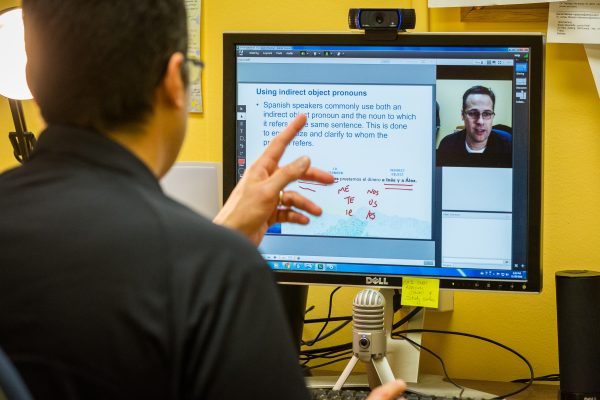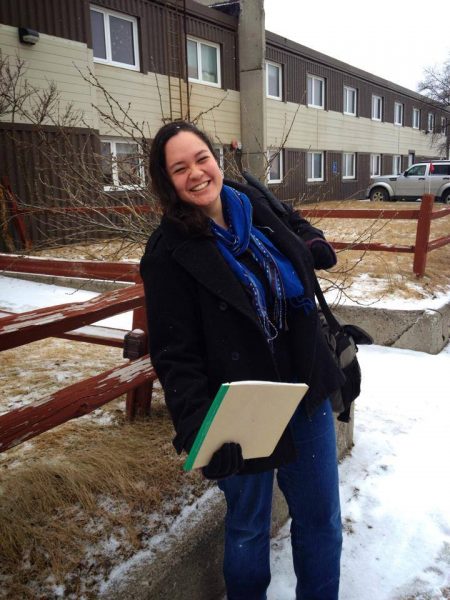Breaking down language barriers with online courses
December 7, 2016
Marissa Carl-Acosta
907-455-2070

Download text and photo captions here.
Heart O’ the Shire bakery in King Salmon, Alaska, gets a lot of foreign customers, and Maica Sherman can greet them in English, Italian, Arabic, Spanish and Japanese.
“You would not believe how excited people get when you say ‘hello’ in their language,” said Sherman, whose family owns Heart O’ the Shire. “It makes their experience in Alaska so much better.”
Sherman has loved languages for as long as she can remember but has had limited access to courses while living in rural Alaska. This semester the University of Alaska Fairbanks added beginner French and Spanish, as well as a Kanji reading and writing course online. Sherman enrolled in all three.
UAF also offers online courses in Latin and Inupiaq — the only known online Inupiaq language course. German courses are in development, and the full Spanish minor should be available online in 2018.
Instructor Helga Wagenleiter is developing the German courses. She has 25 years of experience living and teaching in rural Alaska. “I know what a blessing it is to have online and long-distance learning,” she said.
Easier said than done, however. Instructors developing online language courses face the same challenges as face-to-face instructors — motivating students, choosing the right assignments and managing their workload. They also have to teach students, who are potentially dispersed around the world, a skill that is dependent on community and communication with others.

“We have to be extra careful to bring in exercises that make the students speak, because it’s not enough to just bomb them with grammar exercises and theoretical assignments,” Wagenleiter said.
In instructor Dan Darrow’s Spanish 101 course, students decided that they would video chat as a group twice each week. But that hasn’t always worked, as the majority are nontraditional students juggling full-time jobs, families, other courses and life’s curveballs.
To better fit their needs, Darrow began recording the sessions. Students who can’t make it watch on their own time and post video responses. This tactic is getting positive feedback from students, including one in Florida whose schedule got rearranged when Hurricane Matthew struck.
“It’s a new challenge,” Darrow said, “a new way of teaching.”
UAF’s expansion of online language courses is helping students in fully online degree programs fulfill humanities requirements — Spanish 101, which will be offered again in spring 2017, was full within a week of registration opening. But it’s also creating valuable opportunities for all students and language enthusiasts, on campus and around the world.
Sean Holland, who has a Master of Arts in applied linguistics with an emphasis in foreign language pedagogy, is one of UAF’s instructional designers helping instructors develop new courses and strengthen existing ones.
“The nature of a foreign language is that it is rooted in a specific region or culture of the world,” Holland said. “By offering access to students anywhere in the world, a richer and more diverse cohort is possible in a course. And for less commonly taught languages, such as Inupiaq, an online offering may be the only option.”


